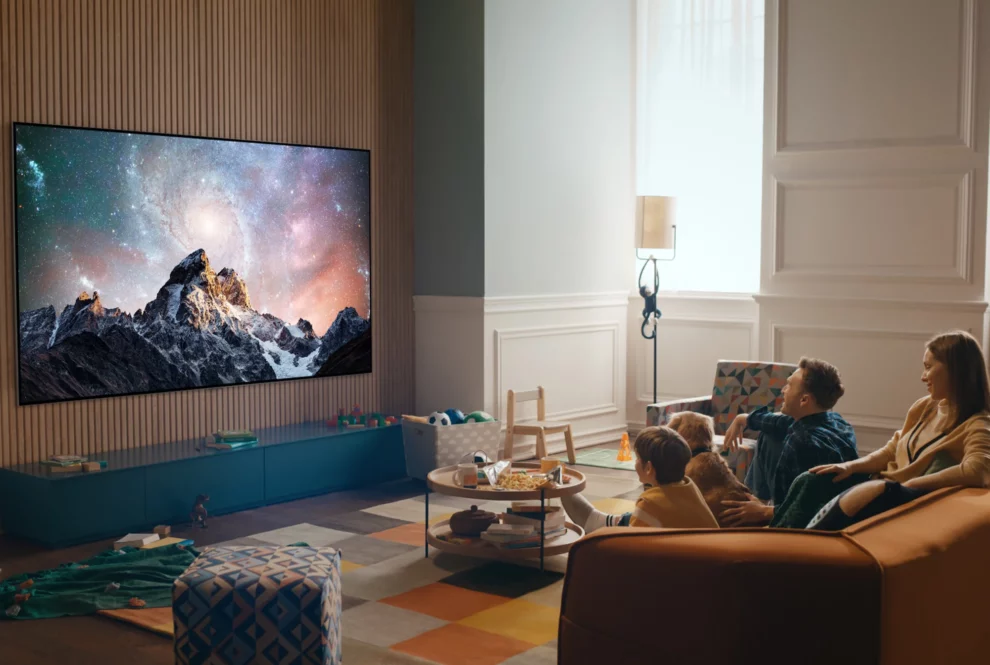Understanding the importance of screen resolution is crucial in today’s digital world. This article delves into the intricacies, 4K, and even higher resolutions, providing a comprehensive guide for making an informed decision.
Table of Contents
Understanding Resolution Basics
Resolution refers to the number of pixels that compose the image on a screen. It’s a key factor affecting image quality, with higher resolutions offering crisper and more detailed visuals.
Understanding resolution in digital images and video is crucial for a variety of applications, from graphic design to photography and videography. Resolution refers to the amount of detail that an image holds, and it’s typically expressed in pixels. Here are some basic concepts:
- Pixels: The smallest unit of a digital image or display, pixels are tiny dots that make up the images you see on your screen. The more pixels an image has, the more detailed it will be.
- Pixel Dimensions: This is the number of pixels along the horizontal and vertical sides of an image, commonly expressed as width x height. For example, an image that is 1920×1080 pixels has 1920 pixels in width and 1080 pixels in height.
- Resolution: Often expressed in pixels per inch (PPI) for images or pixels for video (like 1080p, 4K), resolution determines the quality of the image. Higher resolution means more pixels are packed into the same area, leading to a clearer, more detailed image.
- Aspect Ratio: This is the ratio of the width to the height of an image or screen. Common aspect ratios include 16:9 for widescreen and 4:3 for standard screens.
- DPI (Dots Per Inch): This is a measure of printing resolution. It indicates how many dots of ink or toner a printer can place within one inch. Higher DPI values result in sharper, more detailed printed images.
- Scaling and Resampling: When you change the size of an image, you’re either scaling (changing the size without changing the number of pixels) or resampling (changing the number of pixels and, consequently, the size). Resampling can affect the quality of the image.
- Compression: Many digital images are compressed to reduce file size. Compression can be lossless (no loss in quality) or lossy (some loss in quality). JPEG is a common lossy format, while PNG is often used for lossless compression.
- Display Resolution: This refers to the number of pixels that can be displayed on a screen, such as a monitor or smartphone. Higher-resolution displays can show more detailed images and more content on the screen at once.
FHD Display: An Overview
A Full High Definition (FHD) display refers to a screen resolution of 1920 x 1080 pixels. This resolution is also commonly known as 1080p. The term “Full HD” comes from the fact that it provides higher resolution and more detail than the High Definition (HD) standard, which typically has a resolution of 1280 x 720 pixels or 720p.
Key Characteristics of FHD Displays:
- Resolution: The most notable feature is its resolution of 1920 x 1080 pixels. This implies that the screen displays 1920 pixels horizontally and 1080 pixels vertically.
- Aspect Ratio: FHD displays generally have an aspect ratio of 16:9, which is the standard for most TV and computer monitors, providing a wider viewing area compared to the older 4:3 aspect ratio.
- Pixel Density: The pixel density in FHD displays is higher than in HD displays, offering sharper and more detailed images. This is particularly noticeable in larger screens.
- Content Compatibility: Most modern content, including streaming videos, Blu-ray movies, and video games, are produced in 1080p, making FHD displays a suitable choice for enjoying this content at its native resolution.
- Gaming and Multimedia: For gaming and multimedia tasks, FHD displays provide a good balance between performance and image quality. They are often preferred by gamers who require high refresh rates without the hardware demands of higher resolutions like 4K.
- Affordability and Availability: FHD displays are widely available and are generally more affordable than higher-resolution displays, such as 4K or 8K.
4K Resolution: A Step Up
4K resolution, with 3840×2160 pixels, provides significantly sharper images than FHD. It’s beneficial for those seeking enhanced detail, particularly in larger screens.
4K resolution, often referred to as Ultra High Definition (UHD), significantly enhances the detail and sharpness of a display’s image quality. Here’s a detailed look at what makes 4K resolution a considerable step up from standard HD:
- Higher Resolution: The most obvious improvement is the resolution. 4K resolution offers 3840 x 2160 pixels, which is four times the number of pixels.
- Full HD (1920 x 1080): This means images are much crisper and detailed.
- Improved Texture and Clarity: Due to the higher pixel density, textures in images and videos appear more defined and clear. This is particularly noticeable in scenes with intricate details, like natural landscapes or cityscapes.
- Enhanced Color Depth: 4K displays can produce a wider color gamut, which means they can display more colors. This results in more vibrant and realistic images.
- Better Depth Perception: The increased resolution allows for a better perception of depth in images, making them appear more three-dimensional and lifelike.
- Improved Viewing Experience on Larger Screens: 4K resolution becomes particularly important for larger screen sizes. On bigger TVs or monitors, the higher resolution ensures that the image quality remains sharp and detailed, even when viewed up close.
- Optimal for High-End Gaming and Professional Use: Gamers and professionals who require high visual fidelity greatly benefit from 4K resolution. It ensures detailed and immersive graphics for gaming, and accurate color and clarity for professional video and photo editing.
- Compatibility with Modern Filmmaking Techniques: Many movies and TV shows are now filmed in 4K, making a 4K display essential for experiencing them as intended by the filmmakers.
- Future-Proofing: Investing in a 4K display is also a way of future-proofing, as more content (streaming, broadcast, and gaming) is being produced in 4K.
Higher Resolutions: Exploring 8K and Beyond
8K resolution marks the frontier of current display technology, offering an even more detailed visual experience. This section explores the future possibilities in high-resolution displays.
Comparing Resolutions: FHD vs. 4K vs. 8K
A comparative analysis of these resolutions highlights the differences in visual quality, availability, and price, aiding readers in making an informed choice.
Choosing the Right Resolution for You
This section discusses various factors to consider, such as personal needs and specific uses, in selecting the most suitable resolution.
Resolution in Gaming and Entertainment
High resolution transforms gaming and entertainment experiences, offering more immersive and realistic visuals. This part examines its impact in these areas.
Professional Use: Resolution in Graphic Design and Video Editing
For professionals in graphic design and video editing, higher resolutions are often a necessity. Recommendations for optimal resolutions are provided.
The Role of Screen Size and Distance
Screen size and viewing distance are crucial in choosing the right resolution. This section guides on finding the optimal setup for different situations.
Future Trends in Display Technology
Emerging display technologies and predictions for future advancements in resolution are discussed, giving insight into what’s next in the world of high-resolution screens.
Cost Considerations When Choosing a Resolution
A breakdown of the cost implications of different resolutions helps readers budget for their ideal screen choice.
Maintenance and Longevity of High-Resolution Displays
Maintaining high-resolution displays and ensuring their longevity involves several key practices and considerations:
- Proper Cleaning: High-resolution screens require careful cleaning to avoid damage. Use a soft, lint-free cloth, preferably microfiber, to gently wipe the screen. Avoid using harsh chemicals, as they can damage the screen’s coating. It’s best to use a solution specifically designed for electronic displays or a mixture of mild soap and water.
- Avoiding Physical Damage: High-resolution displays are often more susceptible to physical damage due to their intricate components. Avoid touching the screen with sharp objects and ensure the display is in a secure location where it’s less likely to be knocked over or hit.
- Managing Heat and Ventilation: Excessive heat can reduce the lifespan of a high-resolution display. Ensure that the display is well-ventilated and not covered by anything that could trap heat. If the screen gets too hot, it can affect the performance and longevity of the pixels.
Environmental Impact of High-Resolution Screens
The environmental impact of high-resolution screens is multifaceted, involving several key factors:
- Energy Consumption: High-resolution screens typically consume more energy than lower-resolution screens. This is because they have more pixels to power and often require more powerful backlighting to maintain brightness and contrast at higher resolutions. The increased energy use contributes to a larger carbon footprint, especially if the electricity is sourced from non-renewable resources.
- Resource Extraction and Manufacturing: The production of high-resolution screens requires more sophisticated and sometimes rare materials. For instance, high-quality glass, advanced plastics, and rare earth elements are commonly used in these screens. The extraction of these materials can have environmental impacts, such as habitat destruction, pollution, and energy consumption. Additionally, the manufacturing process itself is energy-intensive and can lead to emissions of greenhouse gases and other pollutants.
- E-Waste: With rapid advancements in technology, high-resolution screens can become obsolete more quickly. This leads to an increase in electronic waste (e-waste), which poses significant environmental challenges. E-waste can contain hazardous materials like lead, mercury, and cadmium, which can leach into the environment if not disposed of properly.
Conclusion
The article concludes with a recap of the key points and final recommendations for choosing the right resolution.
FAQs
- What is the main advantage of 4K over FHD?
- 4K offers significantly higher detail and clarity, making it ideal for larger screens and a more immersive viewing experience.
- Is an 8K resolution worth the investment right now?
- While 8K offers the highest resolution, its content availability and cost may not justify the investment for most users currently.
- How does screen size affect the choice of resolution?
- Larger screens benefit more from higher resolutions like 4K, as they enhance detail and reduce pixel visibility.
- What resolution is recommended for professional graphic designers?
- Professionals should consider 4K or higher to ensure the finest detail and accuracy in their work.




Add Comment